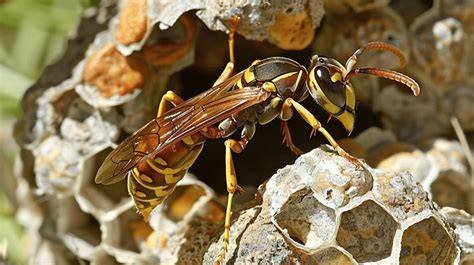At the crossroads of nature and nuclear history, a group of innocent wasps unknowingly signed a short-term lease in one of the most radioactive neighborhoods in South Carolina — and let’s just say, nobody gave them a hazard map.
Earlier this month at the Savannah River Site, a Cold War-era facility turned nuclear cleanup zone, workers doing routine radiation checks discovered a peculiar surprise: a wasp nest with radiation levels 10 times higher than what’s federally allowed. 😳
No wasps were inside, thankfully. But their stylish little home — built with what we assume was top-tier wasp craftsmanship — was swiftly removed, gently de-nested with bug spray, and sent off to live out its days as classified radioactive waste.
Officials say there’s no leak from the nearby underground tanks that still store 34 million gallons of leftover nuclear stew. Instead, they suspect the nest’s contamination came from “legacy radioactive dust” that still lingers around the site like a ghost from America’s atomic past.
But not everyone’s convinced that’s the full story.
“Where did the contamination actually come from? What kind of wasps were they? Could there be another glowing nest buzzing around?” asked Tom Clements, executive director of watchdog group Savannah River Site Watch. In true advocate fashion, he added:
“I’m as mad as a hornet that no one explained how this happened.”Tom makes a fair point: Wasps build with local materials. Some use dirt, others wood pulp. If the nest was made of contaminated dust or debris, that might point to a specific part of the site where radioactive remnants are still hanging out — and not behind sealed walls like they’re supposed to be.
Luckily, officials assured the public there’s no risk of radioactive wasps buzzing around your backyard BBQ. These little guys usually stay within a few hundred yards of their nest, and this one was deep inside the site — well out of range from your citronella candles.
In its glory days, the Savannah River Site produced plutonium pits for nuclear bombs. Today, it’s focused on decommissioning, nuclear fuel production, and managing the complex legacy of its own atomic history. So, while things are a lot safer now, the occasional reminder (like this poor glowing wasp nest) shows that the past hasn’t entirely buzzed off.
So here’s to the wasps — misguided, determined, and wildly unaware of the Department of Energy’s storage rules.
They just wanted a place to call home.
Instead, they ended up in a containment barrel.
☢️ 🦟💔

